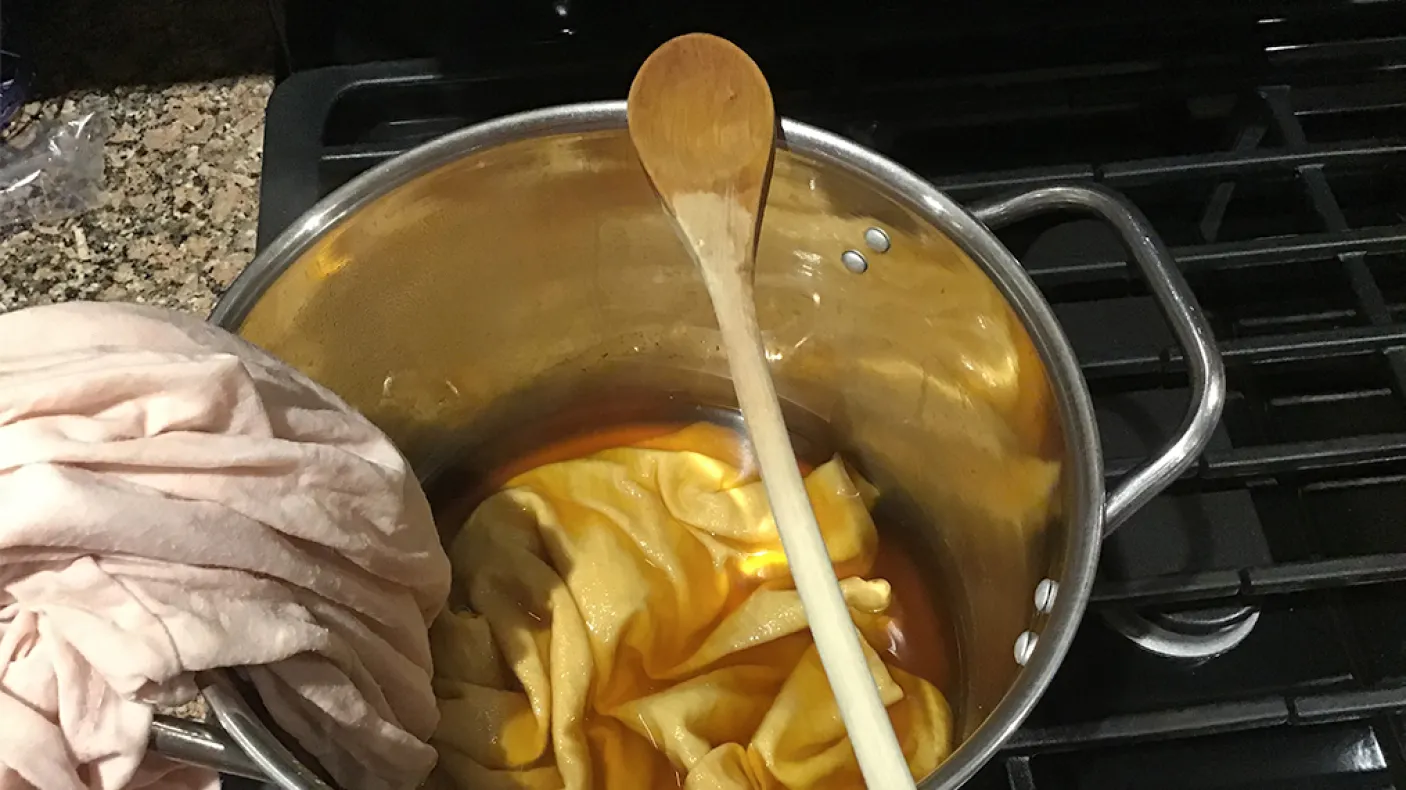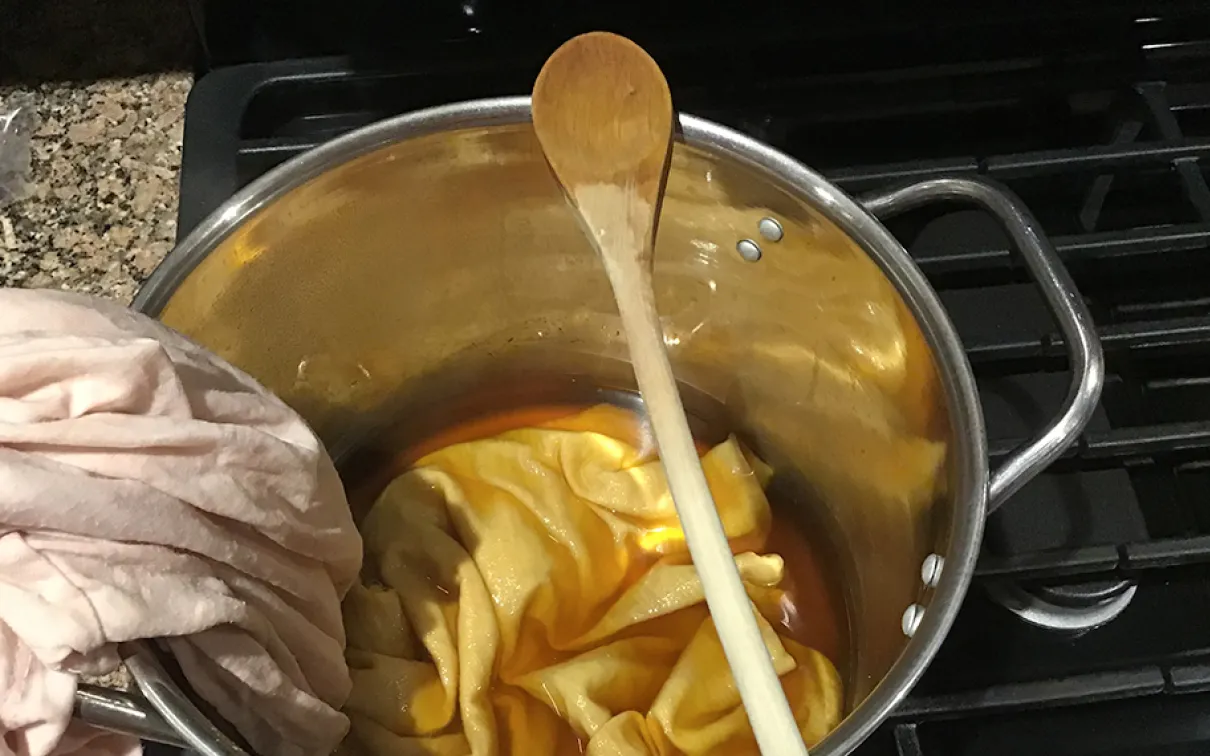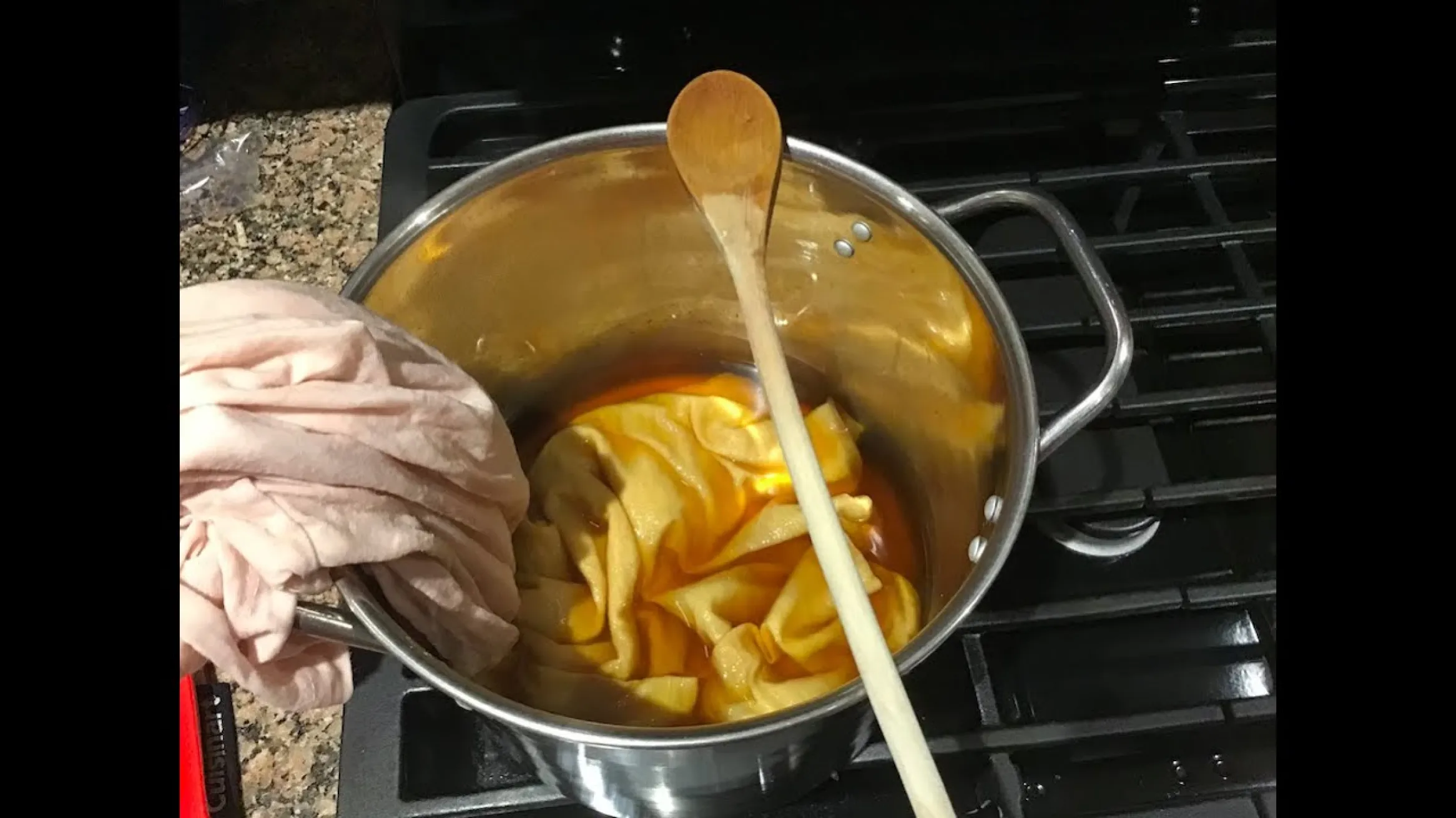ROM Around You: All Dyed Up
Category
Audience
Age
About
What do you know about the things around you? Let’s find out! Explore art, culture, and nature with ROM Teacher Julie Tomé.
Visit ROM Around You for other themes and curiosity challenges to discover more about the objects in your home, yard, and neighbourhood!
Fun Fact
Carmine or cochineal dye is made from powdered cochineal insect bodies. It produces a crimson colour.
All Dyed Up
There is evidence that people have been adorning themselves for thousands and thousands of years. Colour is an important part of adornment, and so it’s an important part of self-expression. The colours used for an article of clothing or other object can indicate belonging, community, status, and economic standing. Today, many dyes are synthetic, but throughout most of history, dyes came from plants.
Curiosity Challenge
Make dyes from plants and see what colours they produce.
Materials
- Plants (examples: berries, dandelions, onions, herbs, roots, or bark)
- Water
- Two old pots
- Gloves
- Apron or smock
- Stove
- Light-coloured natural fiber fabric (examples: cotton, silk, wool, or muslin)
- Knife
- Cutting board
- Sieve
- Salt (optional)
- White vinegar (optional)
Safety note: Check in with an adult before using the stove and knives!
Instructions
- Gather the plants that you will use to make your dye. Flowers should be in full bloom, berries ripe, and nuts mature.
- Chop up your plants and mix in the pot with twice as much water as you have plant (i.e., if you have 1 cup of chopped plant, use 2 cups of water). Bring to a boil and simmer for 1 hour, then strain. This will be your dye bath. Note: be careful when using a knife and the stove - check in with an adult first!
- Prepare your fabric (this will help the dye set):
- If using berries, mix a ¼ cup of salt with 4 cups of water.
- If using plants, mix 4 cups of water with 1 cup of white vinegar.
- Place mixture and fabric in a pot and simmer for 1 hour.
- Rinse the material and squeeze out the excess water.
- Place wet fabric into the dye bath and simmer until the desired colour is reached. Remember the colour will be paler when the fabric is dry. Wear gloves to avoid staining your hands and an apron or smock to avoid staining your clothing.
- Rinse the fabric in cool water until the water runs clear. Let your fabric dry.
- If you’ve dyed an article of clothing, it should be washed separately and in cold water.
- Questions to ponder:
- Why do people dye fabrics?
- Would you find different colours used in different communities? Why?
- What other things might be dyed?
- Why do you think some colours of dye were very valuable in the past (e.g., purple was reserved for royalty in Europe, or only the Emperor was allowed to wear yellow in China)?
- Share your results and thoughts with us on social media @ROMtoronto and #ROMathome


